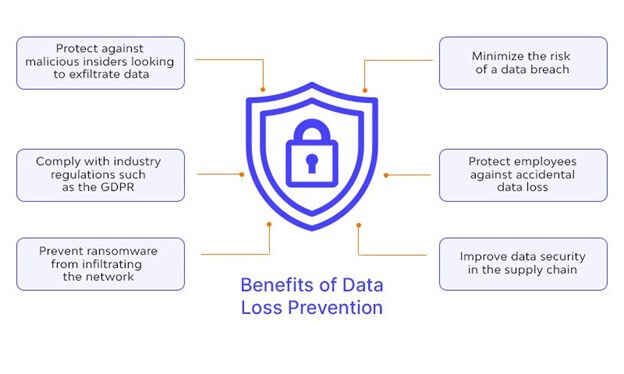Microsoft 365 Data Loss Prevention (DLP): How to Safeguard Your Business from Insider Threats

Protecting sensitive business information is a top priority for organizations today. With the increasing reliance on digital platforms for storing and sharing data, the risk of internal threats, such as disgruntled employees, continues to grow. These employees, motivated by various grievances, might attempt to steal proprietary information, client databases, or other sensitive data. However, not all insider threats are malicious by nature.
Microsoft 365 and SharePoint offer built-in powerful security features to mitigate these risks, ensuring that your business data remains secure even in the face of internal threats.
Examples on Insider Threats
- Employee Leaving for a Competitor: An employee who plans to leave for a competitor might want to take valuable client information, product designs, or strategic plans to gain an advantage in their new role. This could lead to a significant competitive disadvantage for your business.
- Disgruntled Employee with a Grudge: An employee who feels wronged by the company might seek revenge by stealing or leaking sensitive data. This could involve sharing proprietary information with outsiders or even deleting critical files to disrupt business operations.
- Financial Gain: Some employees might be tempted to sell sensitive data to third parties for financial gain. This could include client lists, trade secrets, or financial information.
- Creating Workarounds: An employee is up against a tight deadline, needs to work overnight on a project and sends data to their personal Gmail account to work from their home PC. While intentions here are good, lack of proper training or following procedures can lead to data getting outside the network. What happens if that Gmail account gets hacked? Not only is that data out in the wild, but it could provide an entry point into your company, leading to greater risks.
Microsoft 365 and SharePoint: Protecting Your Data with DLP
Microsoft 365 and SharePoint offer a suite of security features that can help prevent data theft, ensuring that your business remains protected from internal threats.
What is Data Loss Prevention (DLP)?
Data Loss Prevention (DLP) is a critical feature in Microsoft 365 that helps protect sensitive information from being shared or leaked. DLP policies allow you to identify, monitor, and automatically protect sensitive information across Microsoft 365 apps, including SharePoint and OneDrive.
- Real-Time Monitoring and Alerts: DLP can detect when sensitive data, such as credit card numbers, Social Security numbers, or proprietary business information, is being shared or moved. For example, if an employee attempts to email a list of client contacts or upload it to an external site, DLP can block the action and alert the administrator.
- Customizable Policies: You can create custom DLP policies tailored to your business needs. For instance, you can set up a policy to block the sharing of any files containing specific keywords related to your trade secrets.
- Preventing Unauthorized Sharing: DLP can automatically encrypt sensitive data, making it inaccessible to unauthorized users, even if they manage to obtain it.
Access Controls and Permissions
Controlling who has access to what information is another crucial aspect of data protection. Microsoft 365 governance is critical and when setup properly offer granular access controls to ensure that only authorized personnel can access sensitive data.
- Role-Based Access Control (RBAC): This feature allows you to assign roles to employees based on their job functions. For example, a sales representative might only have access to client contact information, while an engineer might have access to product design documents. This minimizes the risk of data theft by limiting access to only what is necessary for each employee’s role.
- Conditional Access Policies: With Conditional Access, you can enforce specific conditions that must be met before an employee can access sensitive data. For example, you can require multi-factor authentication (MFA) or restrict access to data from certain geographic locations.
- Audit Logs and Monitoring: SharePoint and Microsoft 365 provide detailed audit logs that track who accessed what data and when. If a data breach occurs, these logs can help identify the source and take corrective actions.
Consider a financial services company that uses SharePoint to store sensitive client data, including financial records and investment strategies. A disgruntled employee, upset over a denied promotion, decides to download and share this data with a competitor. However, the company’s DLP policies detected the attempted download of files containing financial information and immediately blocked the action. Additionally, the company’s access controls ensured that the employee could only access data related to their current projects, preventing them from viewing more sensitive information.
Thanks to these safeguards, the company was able to prevent the data theft, avoiding potential financial losses and reputational damage.
In an era where data is one of the most valuable assets a company possesses, ensuring its protection is paramount. Microsoft 365 and SharePoint offer robust tools like Data Loss Prevention (DLP) and advanced access controls to safeguard your business from internal threats. By implementing these features, you can significantly reduce the risk of data theft by disgruntled employees and ensure that your sensitive information remains secure.
Is your company taking advantage of Data Loss Prevention (DLP) security features that come with your Microsoft 365 subscription? Contact Proper Sky today to discuss, we’re happy to look under the covers and provide recommendations on ways to improve your security posture, and leverage the tools in your M365 licensing that you already paying for, but just don’t have turned on yet.
.jpeg?width=430&height=266&name=AdobeStock_534476114(1).jpeg)
